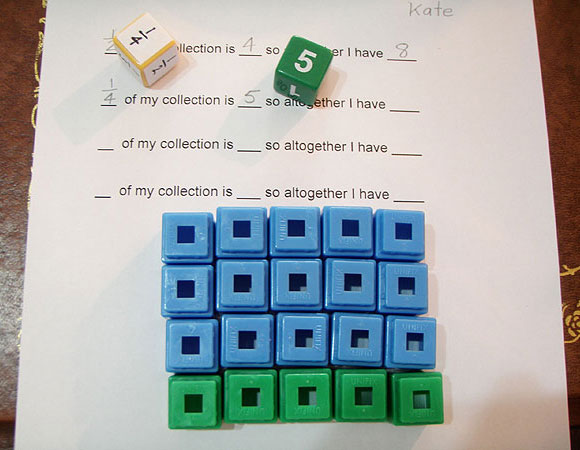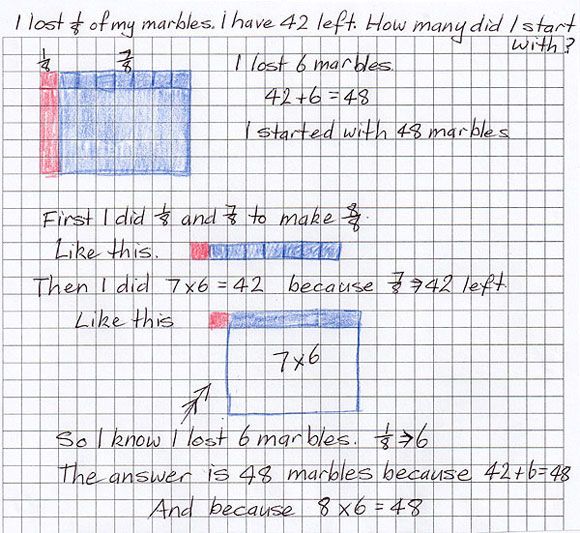Home > Fractions > Activities > Part and wholes
Part and wholes
In years 3 and 4, students use two dice, one labelled 1 to 6 (called the whole-number die) and the other labelled with fractions (called the fraction die). The fraction die has fractions appropriate to the year level (e.g. for year 3 the fractions could be \(\frac{1}{2}\), \(\frac{1}{4}\), \(\frac{1}{8}\), \(\frac{1}{3}\), \(\frac{1}{5}\)).
Pairs of students roll the two dice to generate numbers to insert into the sentence:
(fraction roll) of my collection is (whole-number roll) so altogether I have ____
Students model the problem, using counters to make a group of five.
They then make more groups of five until there are four equal groups, and calculate the total.
Teachers should:
- encourage the formation of arrays to make the relationship with factors and multiples more obvious
- discuss strategies for working out the total without having to build the array
-
ask what other fractions can be determined from the array, such as
\(\frac{3}{4}\) of 20 = 15
\(\frac{1}{5}\) of 20 = 4
In year 6, students solve problems to determine fractions of collections and multiples of those fractions. For example:
I lost \(\frac{1}{8}\) of my marbles. I have 42 left. How many did I start with?
Discuss with the class:
- possible strategies for solving the problems
- the effectiveness of various strategies.
For students not confident in factors and multiples, creating arrays on grid paper can provide scaffolding for finding strategies.


